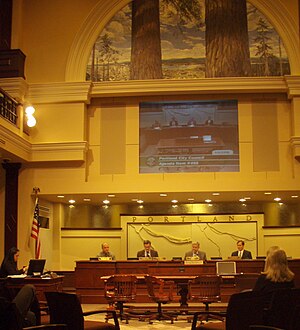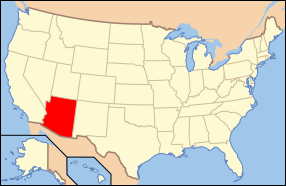 Image via Wikipedia PROVO — The flowing-script labels on their necks, backs or legs are hard to miss.
Image via Wikipedia PROVO — The flowing-script labels on their necks, backs or legs are hard to miss. "King Tae." "Property of Laylow." "Daddy's Lil (expletive)."
"Sometimes you hear that trafficking is called modern-day slavery," said University of Rhode Island professor Donna M. Hughes during a recent BYU conference on human trafficking. "I could give an hour-long lecture on how (they are) similar, but I just wanted to give you a few graphic examples."
And with that, Hughes showed a picture of a 16-year-old girl getting her pimp's name tattooed on her arm just three weeks after she met him.
Hughes has interviewed hundreds of women across the globe who have become property. They are modern-day slaves to fulfill the sexual demands of paying clients as arranged by their pimps or owners.
Yet, unlike historical slavery, many of today's slaves are not forced or stolen away. Instead, they're lured by the promise of jobs and financial security for their families.
"Someone feeds upon their economic and social vulnerabilities and lures them in," said Kevin Bales, president of Free the Slaves and author of "Disposable People: New Slavery in the Global Economy."
"All over the world, they've told the same story," he said during the conference, sponsored by the BYU School of Social Work. "'I was in my village, in my fields, I was downtown on the street and someone pulled up in a truck and said, 'Hey, I've got jobs. Who wants a job?' They say, 'I looked at that person and he looked sketchy, but my children were hungry, and we needed medicine for my wife who was sick.'"
Then hundreds or thousands of miles later when they're put to work in dangerous, demeaning tasks, with a violent overseer and late or no paychecks, the people realize they're in trouble. But by then, it's too late, Bales said.
They're either physically restrained or immobilized by a mound of debt they've been forced to incur at the hands of their "employers."
And it's happening in remote villages, affluent cities and everywhere in between.
While it's nearly impossible to generate exact numbers of trafficking victims, UNICEF estimates that 1.2 million children are trafficked every year, said Frank Schmiedel, from the European Union, Delegation of the European Commission to the U.S.A.
The United Nation's International Labour Organization also estimates that at any given moment, a minimum of 270,000 victims are being exploited as a result of trafficking in Europe and North America, he said.
"People just don't think it's possible in the U.S.," said Jessica Woodbury, a first-year masters student in social work at BYU. "Especially (in) Utah, we're more trusting, more tight-knit. People don't think there's a need to learn about it because it may not apply here."Yet, a federal jury recently indicted officials of the company Global Horizons, for "engaging in a conspiracy to commit forced labor and documented servitude," against nearly 400 Thai citizens who were brought to the United States between 2004 and 2005, according to the U.S. Department of Justice. Several of those Thai workers ended up in deplorable conditions in Utah.
But before the trafficking of women will stop, prostitution must be criminalized, Hughes explained.Some countries regulate or legalize prostitution and benefit from the taxes on brothels and the sex trade. Others countries decriminalize it and eliminate all related laws. When governments try to prohibit it, they often punish the women who have been repeatedly victimized, she said.
Hughes explained that in a study from Chicago, nearly 89 percent of the individuals arrested in a sting were prostitutes, while only 10 percent were male solicitors and fewer than 1 percent were pimps, the men who organize and traffic the women.
Victims of sex trafficking must be empowered and protected, rather than punished and criminalized, she said.
While sex trafficking may seem the most obvious type, domestic trafficking can often be just as damaging, said Jacque Baumer, a student at UVU and intern with Utah Health and Human Rights Project, a Utah-based advocacy group that helps victims of trafficking.
Maids or nannies are often forced to work terribly long hours, abused by family members and kept in isolation, she said. They almost always suffer sexual abuse as well.
"Every domestic-trafficking case has been the next-door neighbor to somebody," Baumer said. "It's not a popular topic and it's a hard issue to accept, because people feel like (they) can't change anything so they don't want to hear about it."
First, people can educate themselves about modern-day slavery, and then educate others, she said. Second, support with time or money the various groups that are working to combat trafficking.
And just as people consider their carbon footprint, they should also assess their "slavery footprint," said Christine Chan-Downer, who works for the U.S. Department of State's Office to Monitor and Combat Trafficking in Persons.
"Does my Halloween chocolate candy come from children enslaved on cocoa farms?" she asked. "I have no doubt that as Americans learn about labor slavery, they'll want assurances that products in our market aren't slave-tainted."
e-mail: sisraelsen@desnews.comHuman trafficking a worldwide problem | Deseret News
Source: Deseret News
Related articles





















